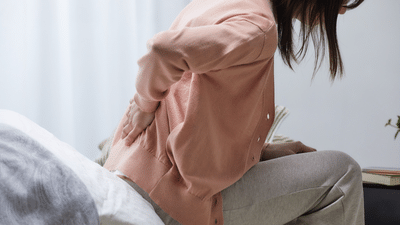Spinal injury: Why 'getting back to normal' is the wrong goal, and what the new normal looks like

“A spinal cord injury can change your body in an instant, but it doesn’t have to change your hope, your dreams, or your life.”
World Spine Day reminds us of the significance of Spinal Health . The spine is not just a column of bones, it is the foundation of our posture, movement, and sensation. When someone sustains a spinal cord injury ( SCI ), their life changes instantly. But that change does not mark an end, it marks a new beginning, shaped through the process of comprehensive rehabilitation.
Rehabilitation after spinal injury is more than physical recovery. It is a coordinated, multidisciplinary effort that helps people rebuild their independence, confidence, and participation in life. Under the medical supervision of a Physiatrist or Rehabilitation Physician , this journey brings together specialists from Physiotherapy, Occupational Therapy, Orthotics, Psychology, Nutrition, Vocational Rehabilitation , Rehabilitation Nursing and Assistive Technology . Together, they help the individual adapt, recover, and rediscover purpose.
Rebuilding Life, Step by Step
In the first phase after SCI, the aim is medically stabilizing and preventing any further secondary injury; however, as this phase resolves, the patient and family must learn to rebuild life with new expectations - which is from survival to becoming the most productive self. This is when rehabilitation truly begins. The person learns to live with new physical realities while finding ways to regain independence and function.
The goal of rehabilitation is not merely to “get back to normal” but to establish a new normal - a life that is productive, fulfilling, and adapted to one’s current abilities. Every part of the program, from exercises to counseling, works toward restoring physical health, emotional balance, and social reintegration.
Preventing Complications: The Shield of Movement
The human body is supposed to move. Even if one is partially immobile, the risk of complications that can detrimentally affect quality of life is still present. Comprehensive and supervised rehabilitation can serve as a powerful preventative shield to these common issues:
1. Pressure Ulcers (Bedsores)
For a person who has some degree of sensory loss and some degree of mobility loss, prolonged pressure is always a threat. Regular position changes, specialized cushions, and training in independent transfers help prevent pressure injuries. Physiotherapists and occupational therapists teach proper posture and weight-shifting techniques, supported by customized orthoses and wheelchair adaptations.
2. Respiratory Concerns
A Spinal Cord Injury, especially at the cervical level, will affect the muscles involved in breathing and coughing and will leave patients prone to chest infections and pneumonia. Breathing exercises, assisted coughing, and posture correction form an integral part of the rehabilitation plan - especially in high-level injuries. With close monitoring, respiratory muscle training and modern technology like Functional Electrical Stimulation ( FES ) help maintain lung capacity and prevent infections.
3. Contractures and Spasticity
Muscles that are not regularly stretched can shorten, leading to contractures, while nerve damage may cause involuntary spasticity, increasing muscle tone, limiting movement, and making daily activities and transfers more difficult. Supervised stretching, range-of-motion exercises, and spasticity management, complemented by splinting and orthotic support, specialised interventions like Botulinum Toxin or phenol neurolysis preserve joint flexibility and function. These interventions improve comfort, facilitate transfers, and enhance daily activities.
4. Cardiovascular Health
Reduced mobility is often associated with the decline of heart health and circulation. Adaptive programs include functional electrical stimulation (FES) cycling, or standing frames to support cardiovascular training, improve circulation, and decrease the likelihood of deep vein thrombosis (DVT). This technology is changing the definition of rehabilitation.
Enhancing Long-Term Well-Being: A Focus on Empowerment
The most significant impact of comprehensive rehabilitation extends well beyond physical recovery, it encompasses emotional, social, and vocational well-being.
Functional Independence: The Central Goal
A rehabilitation program is truly effective when it enables the patient to regain independence in daily life. Comprehensive rehabilitation emphasizes functional training, which includes:
● Wheelchair skills training: Navigating obstacles, steep ramps, and uneven terrain safely.
● Transfer training: Moving independently from bed to wheelchair, wheelchair to car, or other daily transitions.
● Assistive technology training: Learning to use orthoses, braces, or robotic devices to enhance mobility and function.
Every milestone, no matter how small, strengthens self-efficacy, confidence, and quality of life.
Individual Resilience and Social Reintegration
Recovering from a spinal cord injury is psychologically and socially challenging. Comprehensive rehabilitation provides a structured framework that fosters hope, discipline, and self-confidence, enabling patients to reintegrate into their families, communities, and workplaces. By addressing both physical and psychological needs, multidisciplinary care reduces the risk of secondary depression, isolation, and long-term dependence.
Personalized and Technology-Enhanced Approaches
Modern rehabilitation is patient-centered and tailored to individual goals. Technologies such as robotic hand and gait trainers, functional electrical stimulation (FES), balance and gait analysis platforms, and virtual reality-based therapy make recovery measurable, engaging, and meaningful. These innovations accelerate functional gains and empower patients to return to work, hobbies, or everyday interactions like physically embracing a loved one.
A Call to Action on World Spine Day
Comprehensive rehabilitation transforms the trajectory of life after spinal injury from immobility to maximal mobility, dependence to independence, and despair to hope. This World Spine Day, we celebrate the resilience of patients and the dedication of rehabilitation teams who guide them. With structured, multidisciplinary care, long-term wellness after spinal cord injury is not just a hope, it is an achievable goal, realized one step, one session, and one coordinated intervention at a time.
(Dr Rachit Gulati, Head, Department of Physical Medicine and Rehabilitation (PMR), Indian Spinal Injuries Centre)
 “A spinal cord injury can change your body in an instant, but it doesn’t have to change your hope, your dreams, or your life.”
“A spinal cord injury can change your body in an instant, but it doesn’t have to change your hope, your dreams, or your life.”